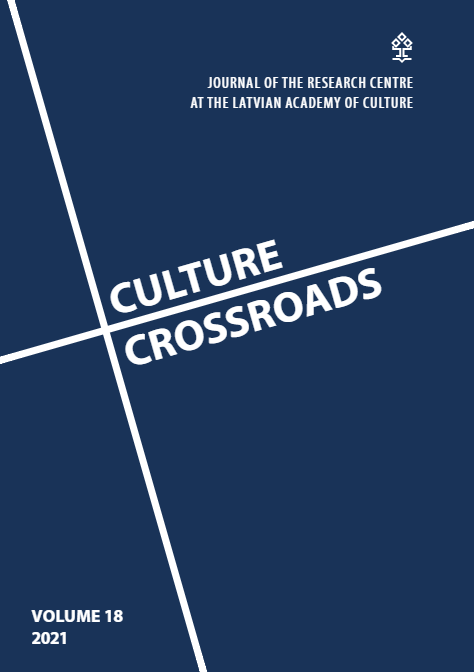CREATING NEW SENSIBILITY IN LITHUANIAN DOCUMENTARY CINEMA: “ACID FOREST” AND “ANIMUS ANIMALIS” (A STORY ABOUT PEOPLE, ANIMALS AND THINGS)
CREATING NEW SENSIBILITY IN LITHUANIAN DOCUMENTARY CINEMA: “ACID FOREST” AND “ANIMUS ANIMALIS” (A STORY ABOUT PEOPLE, ANIMALS AND THINGS)
Author(s): Mantė ValiūnaitėSubject(s): Present Times (2010 - today), Film / Cinema / Cinematography
Published by: Latvijas Kultūras akadēmija
Keywords: Lithuanian poetic documentary; nonhuman; animal studies; Acid Forest; Animus Animalis;
Summary/Abstract: This paper is an analysis of two Lithuanian documentary films – Rugilė Barzdžiukaitė’s “Acid Forest” (Rūgštus miškas, 2018) and Aistė Žegulytė’s “Animus Animalis (A Story about People, Animals and Things)” (Animus Animalis (Istorija apie žmones, žvėris ir daiktus)) (2018). Both of these films re-evaluate the way animals are being represented in cinema. The analysis will be conducted within three frameworks: Lithuanian poetic documentary, nature or wildlife documentaries and animal studies in the field of film studies. While both “Acid Forest” and “Animus Animalis” employ cinematic language that is common to Lithuanian poetic documentary, they both broaden the genre not only with their aesthetic decisions, but also by extending its thematic focus usually limited to human interest. By changing the elements of conventional nature or wildlife documentaries these films manage to question the power dynamics of different species. They create a new sensibility towards nonhuman living creatures by reorganizing the point of view usually belonging to human beings, even by limiting spatial and temporal freedom of the spectator. Interdisciplinary focus on animal studies within the field of film studies sets another important framework that helps us understand why “Acid Forest” and “Animus Animalis” become relevant case studies: they widen the field of documentary cinema in the local context and they are also a part of a global shift in documentary filmmakers’ approach towards nonhuman beings.
Journal: Culture Crossroads
- Issue Year: 18/2021
- Issue No: 1
- Page Range: 44-54
- Page Count: 11
- Language: English

